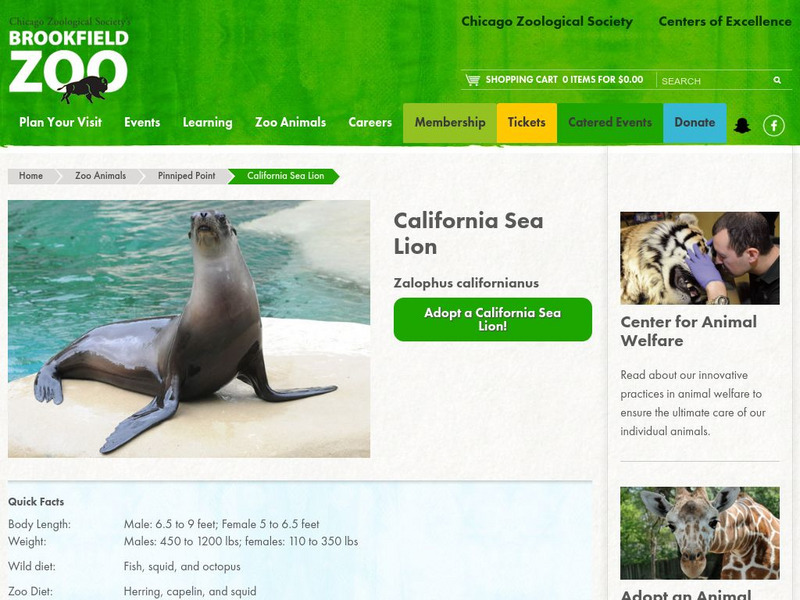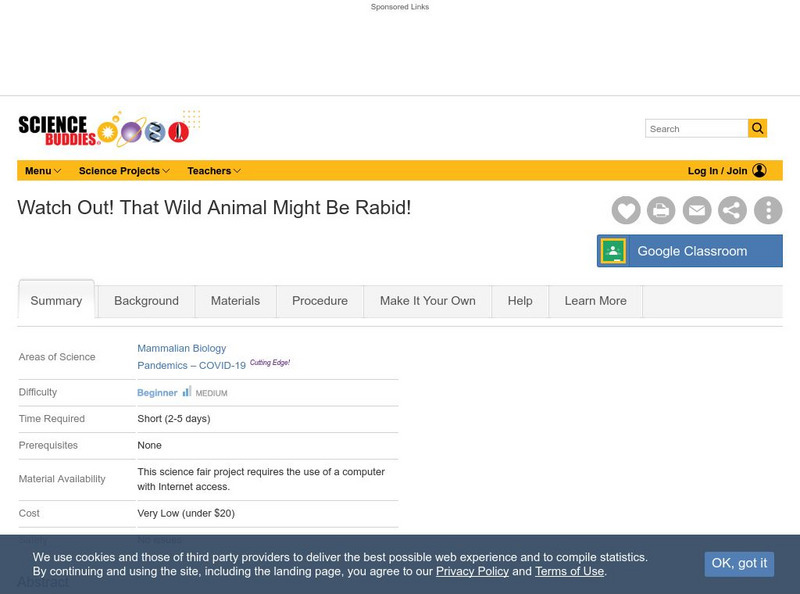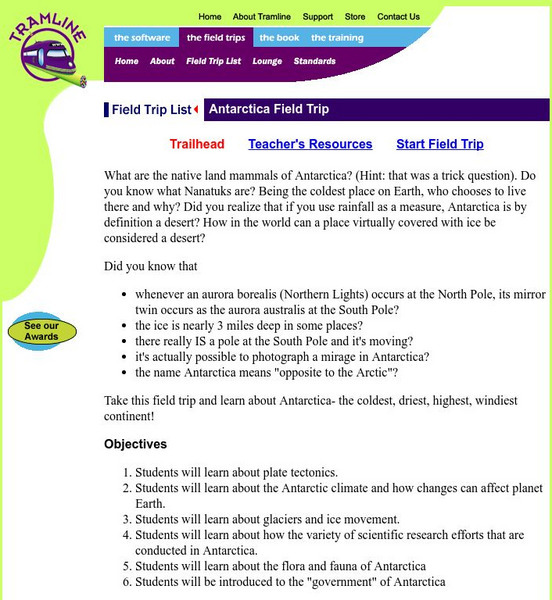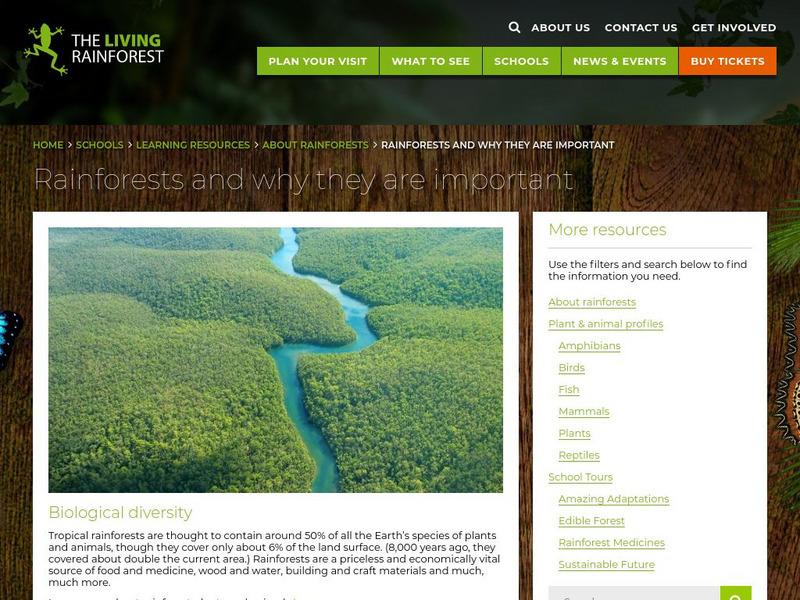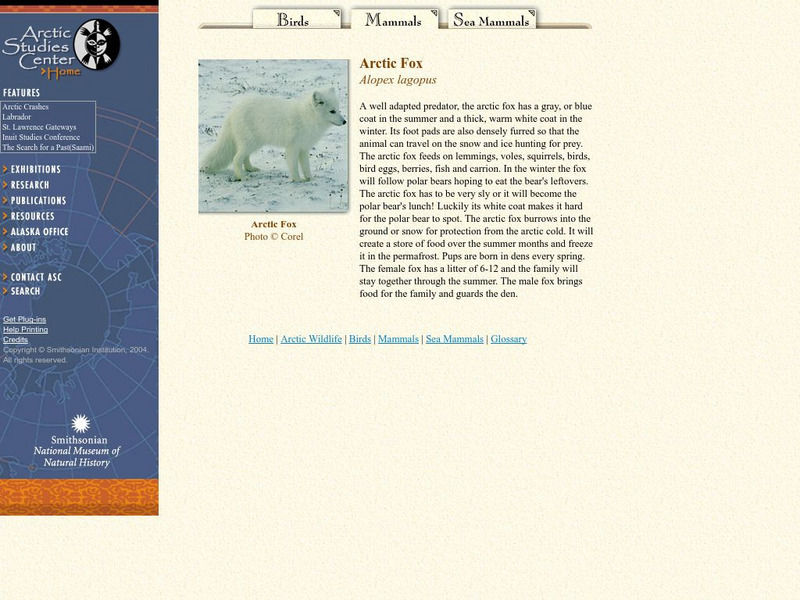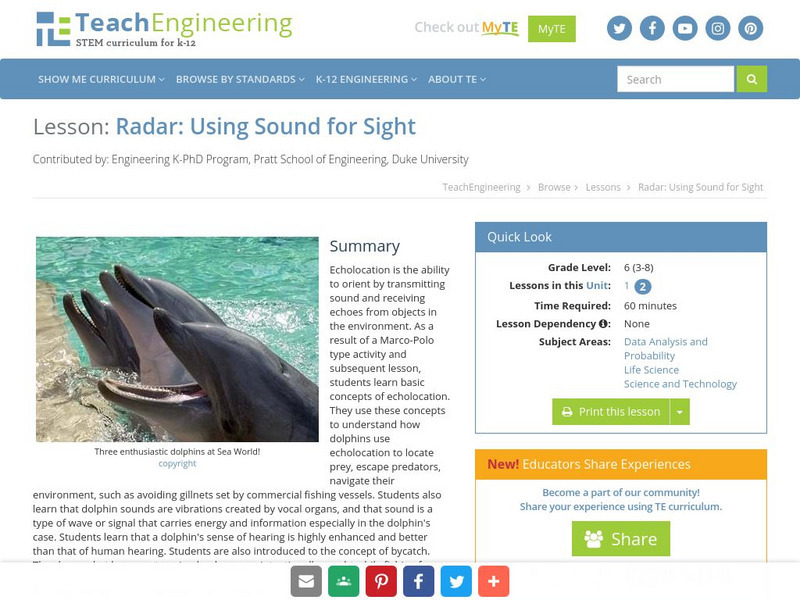Hi, what do you want to do?
Chicago Zoological Society
Chicago Zoological Society: Zoo Explorer: California Sea Lion
Get acquainted with the California sea lion while browsing this animal guide from the Brookfield Zoo. Subject matter includes quick facts, a photo, and highlights on the appearance, habit, and other unique characteristics of this marine...
Ducksters
Ducksters: Endangered Animals for Kids: How They Become Extinct
How do endangered species and animals become extinct? Hunting, pollution, loss of habitat, and introduced species all play a part and are discussed on this site.
Other
Florida Department of Environmental Protection: Life in a Spring
Learn all about the diverse species that live in the Florida Springs. Separate sections for fish, reptiles and amphibians, birds and mammals, insects and invertebrates, and plants.
San Diego Zoo Global
San Diego Zoo: Polar Bears
Listen to a roar (with RealPlayer) and learn about the lives of polar bears. [0:52]
Science Buddies
Science Buddies: Watch Out! That Wild Animal Might Be Rabid!
The word rabid often makes people think of an animal that is extremely violent, crazy, and maybe even foaming at the mouth. But not all animals infected with the rabies disease fit that description. Nevertheless, it is important to avoid...
Other
National Museum of Health and Medicine: Comparative Mammalian Brain Collections
This resource could be used for higher level biology or anatomy classes. There are over 100 different species of mammals represented and each has information about physical characteristics, distribution, and pictures of the brain. There...
Other
Leningrad Zoo (Official Site)
Russian content! Gives detailed information about groups of animals such as mammals, birds, reptiles, and amphibians. Also contains many photographs of animals as well as links to other Russian and world zoos. In addition, it offers...
Other
Whale Net: Satellite Tagging Data, Maps and Information
Information on what satellite tags are, how they work, and how they are used for research on whales. Also discusses several studies they have done using this equipment, and how this information can be used in conservation work. Great...
Missouri Botanical Garden
Missouri Botanical Garden: The Taiga Biome
This resource offers a detailed overview of the taiga biome, including its locations, the types of plants and animals that live there, and other interesting facts.
Tramline
Tramline: Antarctica Field Trip
"What are the native land mammals of Antarctica? Do you know what Nanatuks are? Did you realize that if you use rainfall as a measure, Antarctica is by definition a desert?" Find the answers to these questions and more in this...
Sea World Parks & Entertainment
Sea World: Career Resources
Site sponsored by Seaworld and Busch Gardens discusses what it's like to work with animals at their parks as well as zoo careers in general.
Other
Living Rain Forest: The Rain Forest
A non-profit site supporting the rainforests of the world. Learn about the importance of rainforests, animals and plants, biodiversity, and how to support conservation. Colorful photos are included on the site.
Smithsonian Institution
National Museum of Natural History: Arctic Studies Center: Arctic Fox
This site takes a brief look at the Arctic Fox, focusing on this animal's adaptations to the harsh climate of its environment.
Ducksters
Ducksters: Blue Whale for Kids: Learn About the Giant Mammal.
What are blue whales? Kids find out about the largest mammal on earth that lives in the ocean.
Earth Life
Earth Life: Blood
A very good description of the blood and circulatory systems of mammals and the important role that blood plays in the physiology of animals.
Soft Schools
Soft Schools: Animal Classification Game
Decide whether an animal is an amphibian, insect, mammal or reptile with this interactive classification game.
Other
Discovery of Sound in the Sea
Discover how animals use sound to communicate. Provides links to the uses of sound, effects of sound as well as sound production and reception.
Science Buddies
Science Buddies: Harbor Porpoise Movement
In this project you can use archived satellite tracking data to learn about activity patterns of harbor porpoises. How far do they travel? Can you find patterns in the routes individual animals take? Can you correlate their route with...
Sea World Parks & Entertainment
Sea World: Harbor Seals
Outlines the characteristics of the harbor seal, including classification, habitat, behaviors, and conservation. Helps students identify with seals with a list of "Books for Young Readers." Information at a level of upper intermediate or...
Globio
Glossopedia: Seals
Seals are mammals that live parts of their lives on land and other parts entirely in the water. They breed and care for their babies on land, but spend most of their lives in the ocean. This article provides an in-depth look at these...
TeachEngineering
Teach Engineering: Sound for Sight
Echolocation is the ability to orient by transmitting sound and receiving echoes from objects in the environment. As a result of a Marco-Polo type activity and subsequent lesson, young scholars learn basic concepts of echolocation. They...
Canadian Museum of Nature
Canadian Museum of Nature: Natural History Notebooks
This site from the Canadian Museum of Nature, a natural history museum, provides short information blurbs and fun facts on over 240 different common animals categorized by type (mammals, fish, reptiles, invertebrates, amphibians,...
Smithsonian Institution
National Museum of Natural History: Where Do Mammals Live?: Hyena
A brief illustrated overview of the hyena explains why this animal is such a successful dry-weather scavenger.
Smithsonian Institution
National Museum of Natural History: Where Do Mammals Live?: Wildebeest
Brief illustrated overview of the wildebeest and an accompanying video demonstrate the physical adaptations that allow this animal to eat and digest tough African grasses.
Other popular searches
- Classify Animals and Mammals
- Australian Animals Mammals
- Science Animals Mammals
- Animals Mammals Activities
- Animals Mammals Reproduction





